As per probability , the frequency of occurrene the paindormic sequence recognized by Eco Rl is (Assuming that the occurrence of bases in adjacent positions is random on DNA)
once in 9046 nucleotides
once in 4069 nucleotides
once in 4096 nucleotides
once in 6096 nucleotides
The correct Answer is:C
To find the frequency of occurrence of the palindromic sequence recognized by EcoRI (GAA TTC), we will use probability principles. Here’s a step-by-step breakdown of the solution:
1. Identify the Sequence: The recognition site of EcoRI is GAA TTC. This sequence consists of 6 nucleotides.
2. Understand the Probability of Each Nucleotide: In DNA, there are four types of nucleotide bases: Adenine (A), Thymine (T), Cytosine (C), and Guanine (G). Assuming the bases occur randomly, the probability of each base appearing at any given position is:
- P(A) = 1/4
- P(T) = 1/4
- P(C) = 1/4
- P(G) = 1/4
3. Calculate the Probability of the Entire Sequence: Since the bases are independent, the probability of the entire sequence (GAA TTC) occurring can be calculated by multiplying the probabilities of each individual base:
- P(G) = 1/4
- P(A) = 1/4
- P(A) = 1/4
- P(T) = 1/4
- P(T) = 1/4
- P(C) = 1/4
Therefore, the probability of the sequence GAA TTC is:
P(GAATTC)=P(G)×P(A)×P(A)×P(T)×P(T)×P(C)=(14)6
4. Calculate the Value:
P(GAATTC)=146=14096
5. Interpret the Result: This probability means that the sequence GAA TTC is expected to occur once in every 4096 nucleotide bases in a random DNA sequence.
Final Answer:
The frequency of occurrence of the palindromic sequence recognized by EcoRI is 1 in 4096 nucleotides.
- P(A) = 1/4
- P(T) = 1/4
- P(C) = 1/4
- P(G) = 1/4
- P(G) = 1/4
- P(A) = 1/4
- P(A) = 1/4
- P(T) = 1/4
- P(T) = 1/4
- P(C) = 1/4
P(GAATTC)=P(G)×P(A)×P(A)×P(T)×P(T)×P(C)=(14)6
P(GAATTC)=146=14096
The frequency of occurrence of the palindromic sequence recognized by EcoRI is 1 in 4096 nucleotides.
Similar Questions
Consider the 6×6 square in the figure. Let A1,A2,...,A49 be the points of intersections (dots in the picture) in some order. We say that AiandAj are friends if they are adjacent along a row or along a column. Assume that each point Ai has an equal chance of being chosen
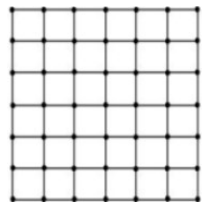
Let pi be the probability that a randomly chosen point has i many friends, i=0,1,2,3,4 . Let X be a random variable such that for i=0,1,2,3,4, the probability P(X=i)=pi. Then the value of 7E(X) isView SolutionRead the passage given below and answer the question:
EVIDENCE FOR THE FIBROUS NATURE OF DNA
The basic chemical formula of DNA is now well established. As shown in Figure 1 it consists of a very long chain, the backbone of which is made up of alternate sugar and phosphate groups, joined together in regular 3' 5' phosphate di-ester linkages. To each sugar is attached a nitrogenous base, only four different kinds of which are commonly found in DNA. Two of these---adenine and guanine--- are purines, and the other two thymine and cytosine-are pyrimidines. A fifth base, 5-methyl cytosine, occurs in smaller amounts in certain organisms, and a sixth, 5-hydroxy-methyl-cytosine, is found instead of cytosine in the T even phages. It should be noted that the chain is unbranched, a consequence of the regular internucleotide linkage. On the other hand the sequence of the different nucleotides is, as far as can be ascertained, completely irregular. Thus, DNA has some features which are regular, and some which are irregular. A similar conception of the DNA molecule as a long thin fiber is obtained from physicochemical analysis involving sedimentation, diffusion, light scattering, and viscosity measurements. These techniques indicate that DNA is a very asymmetrical structure approximately 20 A wide and many thousands of angstroms long. Estimates of its molecular weight currently center between 5×106 and 107 (approximately 3×104 nucleotides). Surprisingly each of these measurements tend to suggest that the DNA is relatively rigid, a puzzling finding in view of the large number of single bonds (5 per nucleotide) in the phosphate-sugar back bone. Recently these indirect inferences have been confirmed by electron microscopy.
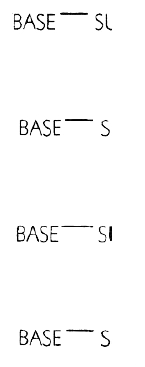
(source: Watson, J. D., & Crick, F.H. (1953, January). The structure of DNA. In Cold Spring Harbor symposia on quantitative biology (Vol. 18, pp. 123-131). Cold Spring Harbor Laboratory Press.)
DNA molecule has _______ internucleotide linkage and ______ sequence of the different nucleotidesView Solution
Knowledge Check
- Question 1 - Select One
As per probability , the frequency of occurrence the palindromic sequuence recognized by Eco RI is (Assuming that the occurrence of bases is adJacent postions is randon on DNA).
Aonce in 9046 nuleotidesBonce in 4069 nucleotidesConce in 4096 nucleotidesDonce in 6096 nucleotieds - Question 2 - Select One
Based on theoretical estimates, the probability of occurrence of nitrogen bases in adjacent positions in a DNA strand is radom . Identify the expected number of recognitions sites in the λ phage genome of 49 kb long having recognition sequences of 6pb(5'GAATTC3'3'CTTAAG5').
A4096B14C12D256 - Question 3 - Select One
In a random DNA sequence, what is the lowest frequency of encountering a stop codon ?
A1 in 20B1 in 3C1 in 64D1 in 10
Read the passage given below and answer the question:
EVIDENCE FOR THE FIBROUS NATURE OF DNA
The basic chemical formula of DNA is now well established. As shown in Figure 1 it consists of a very long chain, the backbone of which is made up of alternate sugar and phosphate groups, joined together in regular 3' 5' phosphate di-ester linkages. To each sugar is attached a nitrogenous base, only four different kinds of which are commonly found in DNA. Two of these---adenine and guanine--- are purines, and the other two thymine and cytosine-are pyrimidines. A fifth base, 5-methyl cytosine, occurs in smaller amounts in certain organisms, and a sixth, 5-hydroxy-methyl-cytosine, is found instead of cytosine in the T even phages. It should be noted that the chain is unbranched, a consequence of the regular internucleotide linkage. On the other hand the sequence of the different nucleotides is, as far as can be ascertained, completely irregular. Thus, DNA has some features which are regular, and some which are irregular. A similar conception of the DNA molecule as a long thin fiber is obtained from physicochemical analysis involving sedimentation, diffusion, light scattering, and viscosity measurements. These techniques indicate that DNA is a very asymmetrical structure approximately 20 A wide and many thousands of angstroms long. Estimates of its molecular weight currently center between 5×106 and 107 (approximately 3×104 nucleotides). Surprisingly each of these measurements tend to suggest that the DNA is relatively rigid, a puzzling finding in view of the large number of single bonds (5 per nucleotide) in the phosphate-sugar back bone. Recently these indirect inferences have been confirmed by electron microscopy.
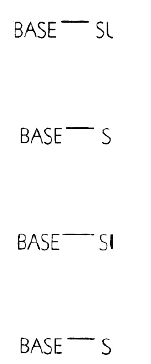
(source: Watson, J. D., & Crick, F.H. (1953, January). The structure of DNA. In Cold Spring Harbor symposia on quantitative biology (Vol. 18, pp. 123-131). Cold Spring Harbor Laboratory Press.)
Out of the four different kinds of nitrogenous bases which are commonly found in DNA, _______ has been replaced in some organisms.View SolutionRead the passage given below and answer the question:
EVIDENCE FOR THE FIBROUS NATURE OF DNA
The basic chemical formula of DNA is now well established. As shown in Figure 1 it consists of a very long chain, the backbone of which is made up of alternate sugar and phosphate groups, joined together in regular 3' 5' phosphate di-ester linkages. To each sugar is attached a nitrogenous base, only four different kinds of which are commonly found in DNA. Two of these---adenine and guanine--- are purines, and the other two thymine and cytosine-are pyrimidines. A fifth base, 5-methyl cytosine, occurs in smaller amounts in certain organisms, and a sixth, 5-hydroxy-methyl-cytosine, is found instead of cytosine in the T even phages. It should be noted that the chain is unbranched, a consequence of the regular internucleotide linkage. On the other hand the sequence of the different nucleotides is, as far as can be ascertained, completely irregular. Thus, DNA has some features which are regular, and some which are irregular. A similar conception of the DNA molecule as a long thin fiber is obtained from physicochemical analysis involving sedimentation, diffusion, light scattering, and viscosity measurements. These techniques indicate that DNA is a very asymmetrical structure approximately 20 A wide and many thousands of angstroms long. Estimates of its molecular weight currently center between 5×106 and 107 (approximately 3×104 nucleotides). Surprisingly each of these measurements tend to suggest that the DNA is relatively rigid, a puzzling finding in view of the large number of single bonds (5 per nucleotide) in the phosphate-sugar back bone. Recently these indirect inferences have been confirmed by electron microscopy.
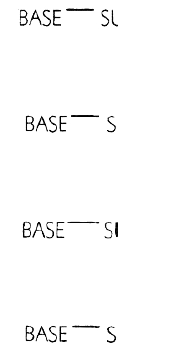
(source: Watson, J. D., & Crick, F.H. (1953, January). The structure of DNA. In Cold Spring Harbor symposia on quantitative biology (Vol. 18, pp. 123-131). Cold Spring Harbor Laboratory Press.)
DNA has a _______ backboneView SolutionRead the passage given below and answer the question:
EVIDENCE FOR THE FIBROUS NATURE OF DNA
The basic chemical formula of DNA is now well established. As shown in Figure 1 it consists of a very long chain, the backbone of which is made up of alternate sugar and phosphate groups, joined together in regular 3' 5' phosphate di-ester linkages. To each sugar is attached a nitrogenous base, only four different kinds of which are commonly found in DNA. Two of these---adenine and guanine--- are purines, and the other two thymine and cytosine-are pyrimidines. A fifth base, 5-methyl cytosine, occurs in smaller amounts in certain organisms, and a sixth, 5-hydroxy-methyl-cytosine, is found instead of cytosine in the T even phages. It should be noted that the chain is unbranched, a consequence of the regular internucleotide linkage. On the other hand the sequence of the different nucleotides is, as far as can be ascertained, completely irregular. Thus, DNA has some features which are regular, and some which are irregular. A similar conception of the DNA molecule as a long thin fiber is obtained from physicochemical analysis involving sedimentation, diffusion, light scattering, and viscosity measurements. These techniques indicate that DNA is a very asymmetrical structure approximately 20 A wide and many thousands of angstroms long. Estimates of its molecular weight currently center between 5×106 and 107 (approximately 3×104 nucleotides). Surprisingly each of these measurements tend to suggest that the DNA is relatively rigid, a puzzling finding in view of the large number of single bonds (5 per nucleotide) in the phosphate-sugar back bone. Recently these indirect inferences have been confirmed by electron microscopy.
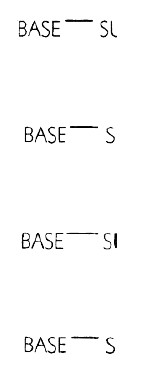
(source: Watson, J. D., & Crick, F.H. (1953, January). The structure of DNA. In Cold Spring Harbor symposia on quantitative biology (Vol. 18, pp. 123-131). Cold Spring Harbor Laboratory Press.)
Purines present in DNA are:View SolutionRead the following statements.
(i) One codon codes for only one amino acid.
(ii) Some amino acids are coded by more than one codon.
(iii) The sequence of triplet nitrogenous bases in DNA of mRNA coresponds to the amino acid sequence in the polypeptide chain.
Give , suitabel terms for the characteristics of 'genetic code' as per the above statements.View SolutionIdentify the true statements:
A. The first recombinant DNA was constructed by using a piece of DNA from a plasmid carrying antibiotic resistance gene in the bacterium Salmonella typhimuriu and linked it to the plasmid to E. coil.
B. Cohen and Boyer are known as father of genetic enginnering.
C. When cut by the same restriction enzyme, the resultant DNA fragments have the same kind of sticky ends and these can be joined together using DNA ligases.
D. Endonucleases remove nucleotides from the ends of the DNA whereas exonuclease make cuts at specific positions within the DNA.
E. Presence of more than one recoginition sites with the vector will generate several fragments, which will complicate the gene cloning
F. Humulin was the first recombinant DNA based product, produced and marketed in India.
G.YAC vectors contain the telomeric sequence, the centromene and autonomously replicating sequence from yeast chromosomes.
H. Alkaline phosphatase, is used to prevent unwanted salf ligation of the vector DNA molecules in procedures of r DNA technology.
I. pBR322 vector was the first artificial ideal vector constructed by Boliver and Rodriguer.
J. Plasmid DNA is coated wiht histone proteins and can act as genetic factor.View Solution

